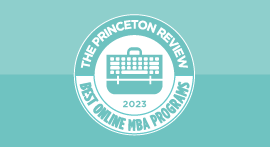
Here’s what you should know about pass rates on the CFA:
- Average pass rates tend to fluctuate
- Level 1 pass rates have hovered around 37%
- Level 2 pass rates have been around 45%
- Level 3 pass rates have been better around 52%
- COVID had an impact on the CFA exam pass rates
Average Pass Rate on the CFA Exam
Many students, even the most talented test takers, express concerns over the low pass rates of each of the three exams in the CFA program: on average, less than half the test takers in a room are going to pass. This is made more stressful on account of the CFA Institute's scoring secrecy, but The Princeton Review's expertise can help keep you informed on the exam's standards. This article will also help you assess your performance, especially on mock exams, where having a target score to aim for and achieve can build confidence for the real exam.
Exam Pass Rates by Level
Level 1:
From 2012 to 2022, pass rates for the level 1 exam have averaged 41%. Since 2020, the average has been hovering around 37%. Anecdotal evidence suggests that many level 1 candidates begin the process without fully appreciating the challenge of the exam. Data from the Institute shows that about 20% of candidates who register for level 1 do not even show up to take it. Many of the candidates who fail level 1 the first time leave the program for good.
Level 2:
In the ten years ending February 2023, pass rates for the level 2 exam have averaged 45%. The material in this exam is seen by many as the most difficult of the three, covering the same topics as level 1 but in much greater detail. All candidates who sit for level 2 have already passed level 1 and are prepared for the challenge, but still less than half pass.
Level 3:
The ten year ending February 2023, the average pass rate for the level 3 exam is 52%. As opposed to the first two levels, which consist exclusively of multiple-choice questions, half of the level 3 exam is in essay form and the other half will have multiple-choice. Attitudes toward the essay questions are mixed. Some candidates find them more difficult than multiple-choice, while others prefer them. The worldwide exam is given exclusively in English, and candidates who are not native English speakers may struggle with the essay portion.
The Covid Effect
During the COVID outbreak of 2020-2022, pass rates for all three exams fell to all-time lows. The level 1 rate in July 2021 was an alarming 22%, the August 2021 level 2 rate fell to 29%, and both the May and August 2021 level 3 rates were 42%. During the lockdowns, the exams were repeatedly pushed back, resulting in many candidates studying for an exam only to find out they could not take it as planned. The CFA Institute stated it did not make any significant changes to the exam during that time and showed data suggesting the deferred candidates drove the decline with a lower average pass rate. Pass rates for all three levels have since recovered, but it is crucial to maintain the rise.
Minimum Passing Score
After the exam cycle is complete, the Institute determines that exam’s minimum passing score (MPS). The figure is not made public, and its calculation method is a closely guarded secret. The Institute gives some information on its methodology for determining the score.
The Angoff Method
Rather than following most standardized tests by grading on a curve, the CFA Institute calculates the MPS using a process called the Modified Angoff Method. Judges evaluate each exam question to estimate whether a theoretical Just Qualified Candidate or JQC (someone who has the minimum aptitude needed to pass the exam) would answer the question correctly. The view of each judge is recorded for each question, and the results are compared to the performance of the actual candidates who sat for the exam. Passes and fails are given based on whether each candidate correctly answered enough questions to achieve the JQC level or higher.
Equating
In the computer-based format, an exam is drawn from a bank of questions so that the exams are not exactly alike. Because of the random draw, some candidates take exams with a higher proportion of more difficult questions. To allow for the difference, the Institute uses a process called “equating.” It records the difficulty level of each question and adjusts the MPS for each candidate based on the questions drawn on that particular exam. This process is also applied to exams given at different times throughout the year.
Guiding Principles
The Institute has posted a set of “guiding principles” that it adheres to during the grading process. These principles are rather intuitive, like ensuring fair treatment of all candidates, employing relevant expertise and best practices, maintaining transparency and integrity, and using consistent methodology. It’s unclear how these principles are used to determine the MPS. They likely reflect a general attitude toward the integrity of the exam.
Ethics Adjustment
The MPS applies to the score on the entire exam, and there is no score requirement for any individual topic. A candidate who does poorly in one topic can make up points in another. The exception to this is the ethics adjustment. A candidate whose score is close to the MPS will pass or fail based on the score on the ethics questions. A high score in ethics puts the candidate over the top, while a low score results in a failing grade. This and the fact that ethics has the highest weight on both the level 1 and level 2 exams make ethics easily the most important topic.
How to Improve Your CFA Pass Rate
All this information does not actually provide a target score. The Institute gives a wealth of commentary on the methodology behind its MPS without any numerical guidance on the score itself. The Princeton Review’s advice is for level 1 candidates to target a score on mock exams of at least 70% and pay special attention to the ethics topic to leverage the ethics adjustment. When exam day comes, you shouldn’t be thinking about the MPS, only about correctly answering as many questions as you can to increase your chance of being in the top half of your exam’s CFA pass rate.

Find MBA Programs Matched to Your Interests
Explore our featured business schools to find those that are looking for students like you.
Top Online MBA Programs
On a mission to increase your salary? Our Top 50 Online MBA ranking is based on academics, career outcomes, tech platforms, and more.
Best Career Prospects
Find out which schools have the best track records for getting students jobs—and the highest starting salaries.
Top Schools for Entrepreneurship
Ready to build your own business from the ground up? Check out these 50 graduate programs.






